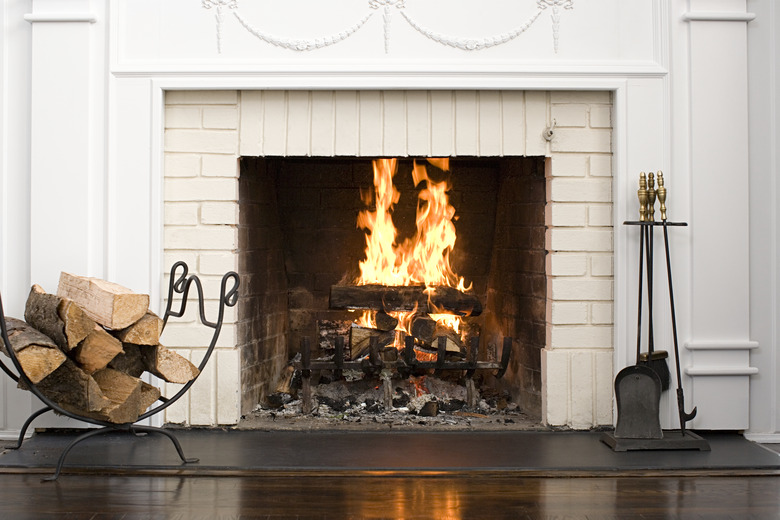How To Use A Fireplace Grate
We may receive a commission on purchases made from links.
Fireplace grates, typically made of steel or cast iron, increase air movement around the fire in your wood-burning fireplace, allowing it to burn more evenly and efficiently. But this doesn't mean that you can overload the grate to minimize adding logs later; even with the added air movement, proper fire starting and maintenance is required.
If you plan to build daily fires, opt for the thickest, heaviest grate you can find, preferably of cast iron. As the fire matures, add progressively larger logs, reserving the smallest for the next fire. Put on work gloves before you start filling the grate to protect your hands from splinters and heat.
How to Use a Fireplace Grate
1. Choose the Right Size
Measure the width of the firebox at the front and back using a tape measure since some fireboxes are tapered so the width is different at the front or the back. Use the smallest width measurement to choose the fireplace grate. Measure the depth of the firebox. The width and depth of the grate should be 6 inches less than the opening width and total depth of the interior of the firebox. For example, a 42-by-16-inch firebox requires a 36-by-10-inch grate.
2. Position the Fireplace Grate
Wet the ash with water, sweep the firebox floor at least 24 hours after your last fire and dispose of the debris to clean your fireplace before adding the grate. Position the grate in the center of the fireplace so that the long side faces the opening. Some grates are tapered with one long side being slightly longer than the other. Position the grate so the longest side faces out toward the room and the shorter side is at the back. You should have about 3 inches around the grate on all sides. If you place the grate too far forward, it can feel like it's sticking out into the room and the smoke can come into your room instead of going up the chimney.
3. Load the Fireplace Grate
Position two small seasoned logs parallel to each other on the grate, one towards the front and one towards the back. Fill the area between the two logs with tinder; crumpled newspaper or dried bark work well. Add a healthy amount of kindling 1 inch or less in diameter over the tinder and the logs. Twigs or leftover wood splits from cutting firewood are ideal.
4. Top With More Logs
Top the tinder, kindling and logs with two to three small logs angled between the back left and front right corners of the grate. If you have a narrower fireplace or grate, two logs will suffice. This allows for ample air movement, maintaining space for the fire to breathe and grow.
5. Prepare To Start the Fire
Open the fireplace damper. Roll a piece of old newspaper lengthwise. Hold it below the opening to the flue and use a long lighter to light the top end of the roll. Let the smoke waft up the chimney for about 10 seconds.
6. Light the Logs
Drop the newspaper onto the logs and let it burn out. Position a fireplace lighter underneath the grate and light the tinder. Close the screen or place a standalone screen in front of the firebox opening. Add additional logs as necessary to maintain the fire.
